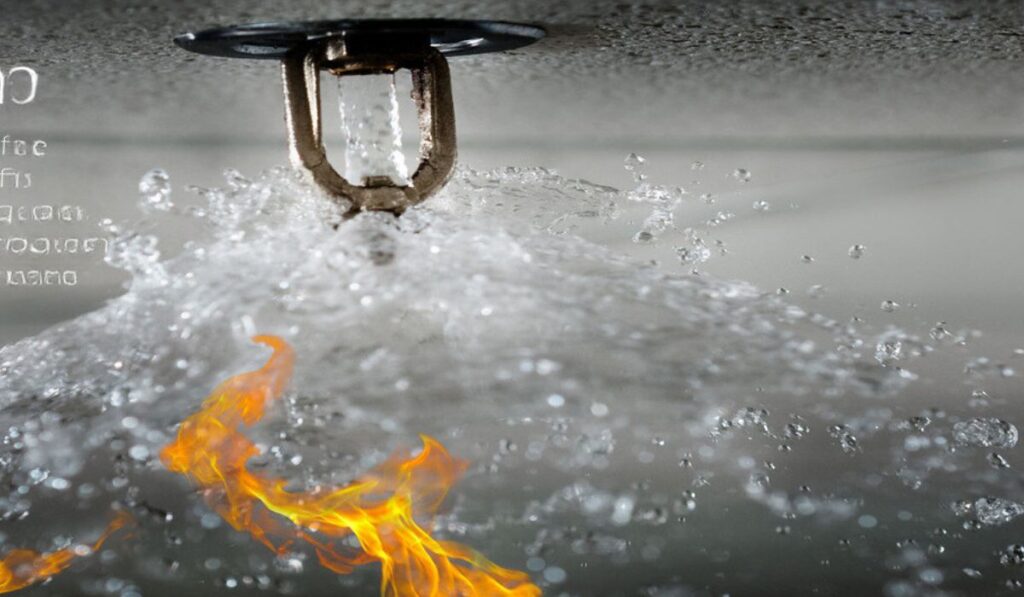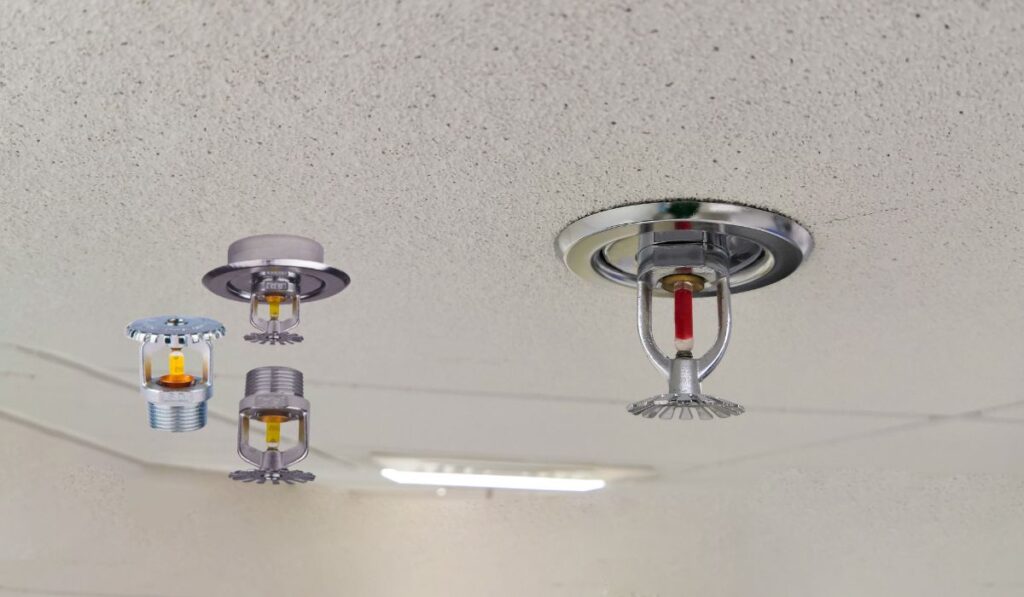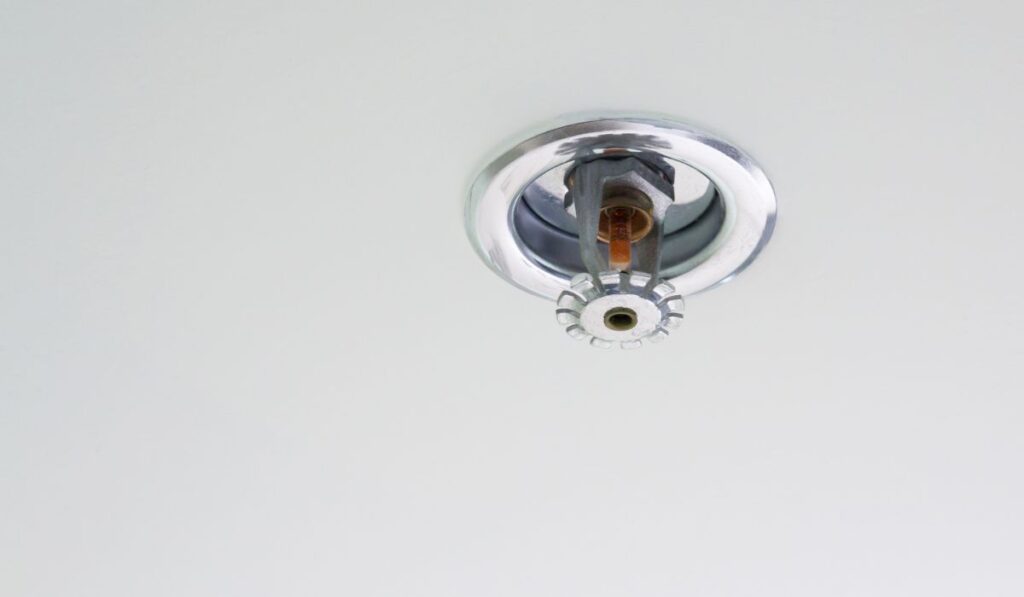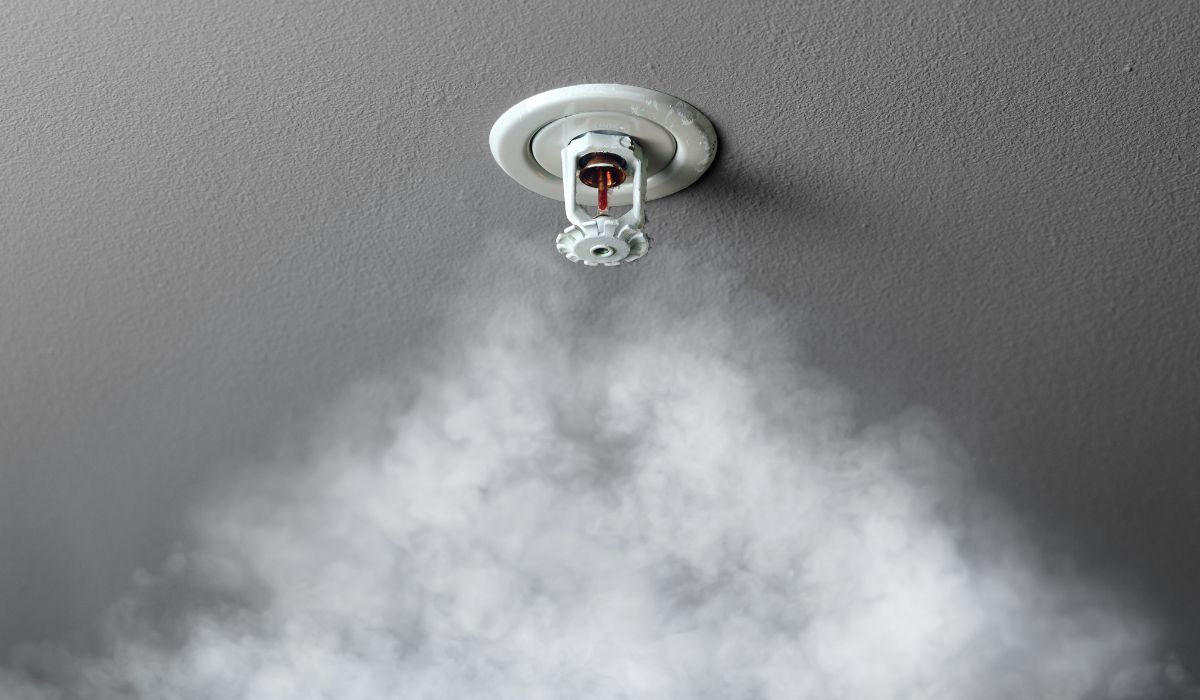Fire protection sprinkler systems are integral in safeguarding property and lives from fire disasters. These systems automatically dispense water when a fire is detected.
Fire protection sprinkler systems have become a key component in fire safety, offering both residential and commercial properties a first line of defense against the spread of flames. Designed to activate during the early stages of a fire, these sprinkler units are heat sensitive and distribute water to the affected area, effectively containing or even extinguishing the blaze before it escalates.
Their installation is governed by stringent codes and standards to ensure optimal functionality. With advancements in technology, modern sprinkler systems have become more sophisticated, providing higher levels of protection with minimal water damage. The reliability and proven effectiveness of fire sprinkler systems make them a critical feature in building safety strategies worldwide.
The Role Of Sprinkler Systems In Modern Safety

In the quest for a safer environment, fire protection sprinkler systems have become crucial. They are silent guardians, springing into action during fire outbreaks. Beyond quenching flames, these systems save lives and reduce property damage. Their importance in modern safety is immeasurable, often warranting their installation in commercial and residential buildings.
History And Evolution Of Fire Sprinklers
- 1812: The inception of fire sprinklers
- 1874: The first automatic sprinkler system
- Advancements: Materials, response times, and reliability improved over decades
From their early patents to high-tech designs, sprinkler systems have evolved significantly. Initially, they were simple contraptions, but innovation and knowledge spawned complex systems that adapt to different environments and fire scenarios.
Sprinkler Systems And Their Impact On Fire Safety
Deploying a fire sprinkler system translates to a proactive approach to fire safety. When triggered, they perform two key functions: control fire spread and allow safe evacuation.
| Aspect | Impact |
|---|---|
| Fire Damage | Significantly reduced |
| Lives Saved | Countless due to quick response |
| Property Protection | Enhanced by limiting destruction |
Sprinkler systems act swiftly, cutting risks dramatically. Extensive research proves that spaces with sprinklers see less damage and fewer fatalities. This makes them a vital aspect of modern building safety protocols.

Credit: shutgun.ca
Understanding Sprinkler System Components
A reliable fire protection sprinkler system consists of several critical components. Each part plays a key role in detecting and suppressing fires, safeguarding lives, and valuable property. Let’s dive into the intricacies of sprinkler systems and reveal the functions of their key components.
Anatomy of a Sprinkler Head
Anatomy Of A Sprinkler Head
Sprinkler heads are the most visible parts of a sprinkler system. Their main job is to release water when a fire occurs. Here are the parts of a sprinkler head:
- Flange: Provides a seal against the ceiling or wall.
- Body: Connects to the pipe system.
- Deflector: Spreads water in a pattern.
- Thermal Sensor: Reacts to temperature changes.
- Bulb or Fusible Link: Holds the head closed until heat activates it.
These heads come in different types and designs, tailored for specific environments and fire hazards.
The Network of Pipes and Valves
The Network Of Pipes And Valves
The network of pipes and valves forms the system’s skeleton, distributing water to the sprinkler heads. This network includes:
- Main Valve: Controls the flow of water in the system.
- Pipeline: Transports water to different areas.
- Branch Line: Connects main pipes to sprinkler heads.
- Alarm Valve: Signals when the system is active.
- Pressure Gauge: Monitors water pressure.
These pipes and valves are meticulously designed to meet the demands of specific fire scenarios, ensuring prompt and effective response.
Types Of Fire Sprinkler Systems

Understanding the types of fire sprinkler systems is crucial for safeguarding lives and property. Different settings require unique sprinkler solutions. Let’s explore the most common types to find the best fit for various environments.
Wet Pipe Systems: The Standard Solution
Wet pipe systems are widespread due to their reliability and simplicity. In these systems, the pipes remain filled with water. The water is always ready to combat fires, making wet pipe systems an excellent standard solution for many buildings.
- Always charged with water, ensuring immediate response.
- Simple design with fewer components and maintenance needs.
- Ideal for spaces with constant temperatures above freezing.
Dry Pipe Systems For Sensitive Environments
Dry pipe systems provide fire protection without the risk of water damage to sensitive areas. These systems are charged with air, and only when the fire is detected does the air release and water comes through.
| Advantages | Applications |
|---|---|
| No risk of water damage in low temperatures | Freezers and cold storage facilities |
| Protection for water-sensitive areas | Archives and data centers |
How Sprinkler Systems Detect And React To Fire

How Sprinkler Systems Detect and React to Fire showcases the state-of-the-art technology that safeguards our lives and properties. At the heart of fire safety, these systems stand vigilant, ready to combat flames upon detection. Let’s delve into the workings of these silent heroes.
The Science Of Heat Sensitivity
Sprinkler systems are fine-tuned to recognize heat from fires. Here’s a closer look at how they sense danger:
- Heat-sensitive elements: Components like bulbs or fusible links react to specific temperatures.
- Quick activation: Upon reaching the set temperature, these elements break or melt swiftly.
The Automatic Response To Fire
After detection, sprinkler systems spring into action with precision. The response mechanism involves:
- Release of water: The breaking element prompts valves to open, releasing water.
- Targeted dousing: Sprinklers focus on fire-affected zones, avoiding unnecessary water damage.
Every sprinkler operates independently, ensuring a swift and localized response to emerging threats.
Sprinkler System Installation: Planning And Execution
Installing a fire protection sprinkler system is a critical step toward safeguarding your property. The planning and execution of this process involve several key phases. These phases ensure that the system functions effectively and meets all safety codes. We will delve into the design criteria necessary for thorough coverage. Then, we will explore the debate between professional installation and DIY approaches.
Design Criteria For Effective Coverage
The design of your sprinkler system is fundamental to its success. Below are essential design criteria to consider:
- Room dimensions and usage
- Type of sprinkler heads suited for the space
- Water supply requirements
- Local building codes and standards
An effectively designed sprinkler system must account for the specific needs of each area it covers. It should deliver enough water to contain and extinguish a fire in any part of the coverage area. Professional input is invaluable for this detailed planning stage.
Professional Installation Versus Diy
When deciding between professional installation and a DIY approach, consider the following points:
| Professional Installation | DIY |
|---|---|
| Conducted by certified experts | Requires substantial knowledge |
| Ensures compliance with codes | Risks of non-compliance |
| Often comes with warranties | No professional support |
| Time-saving | Can be more time consuming |
While a DIY installation may seem cost-effective, the complexities and risks involved can make the professional route more appealing. Professionals bring expertise that safeguards the installation process against common pitfalls. Choosing expert installation often results in greater peace of mind and reliability.
Maintaining Your Sprinkler System
Fire protection sprinkler systems save lives and property.
Keeping them in top shape is a must. Regular care ensures they work when needed.
Let’s explore essential maintenance practices.
Routine Inspections And Testing
Regular check-ups spot problems early. They keep systems reliable.
Aim for at least annual inspections.
- Monthly checks for gauges on wet pipe systems.
- Quarterly inspections of water flow, valves, and alarm devices.
- Yearly tests for a full system examination.
Hire a certified technician for in-depth assessments.
| Inspection Type | Frequency |
|---|---|
| Gauge check | Monthly |
| Control valves | Quarterly |
| Full system test | Annually |
Addressing Common Issues And Repairs
Quick fixes stop small issues from growing.
Look for signs of trouble like leaks or corrosion.
- Leaky valves? Replace or repair them quickly.
- Rusty pipes or heads? They need immediate attention.
- A professional should handle major repairs or replacements.
Keep a log for all maintenance activities.
This record is vital for safety audits. It shows system integrity.
Regulatory Compliance And Sprinkler Systems
Understanding the intricacies of regulatory compliance is crucial when it comes to fire protection sprinkler systems. These systems are governed by detailed standards and codes to ensure maximum effectiveness and safety during fire emergencies. Businesses, building owners, and safety managers need to ensure that their systems adhere strictly to these regulations to protect lives and property.
Building Codes And Fire Safety Standards
Strict adherence to building codes and fire safety standards is non-negotiable for fire protection sprinkler systems. Codes such as the International Building Code (IBC) and standards provided by the National Fire Protection Association (NFPA), particularly NFPA 13, outline the design and installation requirements for these life-saving systems. Not only do they detail the minimum requirements, but they also present guidelines for comprehensive fire protection solutions.
- NFPA 13: Standard for the Installation of Sprinkler Systems
- IBC: Provides international regulations for fire safety
Non-compliance with these regulations could result in fines, increased liability, and even facility closure. Thus, staying informed and up-to-date is essential for safety and legal operation.
Certification And Compliance Audits
Sprinkler systems must undergo regular audits to ensure they meet safety standards. These compliance audits assess the functionality and readiness of a sprinkler system. Certified professionals conduct these evaluations, looking at aspects like water supply, system pressure, and obstruction inspection. Regular audits help identify deficits before they become critical issues.
| Compliance Activity | Frequency |
|---|---|
| Full System Inspection | Annually |
| Obstruction Inspection | Every 5 years |
| Water Pressure Testing | Quarterly |
Certification of a fire sprinkler system comes after successful compliance with codes and standards. A certificate is then awarded, commonly known as a ‘Certificate of Compliance.’ This vital document serves as proof that a system is designed, installed, and maintained correctly, ready to operate during emergencies.
For optimal safety and legal compliance, regular review against the latest codes and auditing by certified professionals is essential.

Credit: www.linkedin.com
Case Studies: Sprinkler Systems Saving Lives
Welcome to our deep dive into the world of fire protection, focusing on sprinkler systems saving lives. We begin with an examination of real-world events where these silent guardians turned potential tragedies into stories of safety and relief.
Real-life Incidents And Outcomes
The power of sprinkler systems comes to life through these compelling case studies. Each tale reinforces the critical role sprinklers play in our everyday safety.
- In a Chicago high-rise, a fire broke out on the 15th floor. Sprinklers activated immediately, containing the blaze before firefighters arrived.
- A family in California slept as a fire started in their kitchen. The sprinkler system sprung into action, quenching the fire and saving everyone inside.
- At an Arizona school, sprinklers drenched a storage room fire, preventing the spread and protecting hundreds of students.
Statistical Evidence Of Sprinkler Effectiveness
Statistics paint a clear picture of sprinkler efficacy. The numbers speak for themselves, showcasing how these systems stand vigilant against fires.
| Event | Lives Saved | Property Loss Prevented |
|---|---|---|
| Residential fires | 87% | 70% |
| Warehouse fires | 100% | 85% |
| Office fires | 99% | 80% |
In the National Fire Protection Association (NFPA) report, buildings with sprinklers saw a 60% reduction in fire deaths. Fires were contained to the room of origin in 97% of cases with sprinkler systems. These numbers strongly advocate for installing sprinkler systems in all buildings.
The Future Of Fire Protection
As technology advances, the arena of fire safety evolves. The next generation of fire protection is a blend of innovation and intelligence, aiming to save more lives and preserve property in ways previously unimagined. Let’s explore the future of fire protection, which promises enhanced safety through cutting-edge sprinkler systems and seamless integration with smart technology.
Fire protection sprinkler systems are undergoing a transformative change. These changes make systems more reliable and efficient.
- Eco-friendly designs: Reduced water usage and improved environmental impact.
- Advanced materials: Corrosion-resistant alloys extend system lifespans.
- Higher precision: Sensors detect fires with greater accuracy, minimizing false alarms.
Smarter homes deserve smarter fire protection. With smart home systems, sprinklers become even more effective.
| Feature | Benefit |
|---|---|
| Real-time alerts | Quick response to potential dangers, even remotely. |
| Automated testing | Regular system checks without manual intervention. |
| System health reports | Keep track of maintenance needs effortlessly. |
Frequently Asked Questions For Fire Protection Sprinkler Systems
What Are The 4 Types Of Fire Sprinkler Systems?
The four types of fire sprinkler systems are wet pipe, dry pipe, pre-action, and deluge systems. Each system activates differently to extinguish fires effectively.
What Is The Nfpa Standard For Sprinkler Systems?
The NFPA standard for sprinkler systems is NFPA 13: Standard for the Installation of Sprinkler Systems. It outlines design, installation, and maintenance requirements.
What Are The Three 3 Types Of Conventional Sprinkler Systems?
The three types of conventional sprinkler systems are wet pipe, dry pipe, and pre-action systems. Each system suits different environmental conditions and fire protection needs.
What Are The Four Types Of Fire Protection System?
The four types of fire protection systems are passive fire protection, active fire protection, detection, and alarm systems.
What Triggers Fire Sprinklers?
Fire sprinklers are activated by high temperatures, typically above 135-165°F, which melts a fusible link or glass bulb, releasing the water.
How Often Should Sprinklers Be Inspected?
It’s recommended to inspect fire sprinkler systems at least annually, but certain environments may require more frequent checks.
Conclusion
Ensuring the safety of your property is paramount, and fire protection sprinkler systems offer reliable defense against the unexpected blaze. By integrating advanced sprinkler technology, you significantly reduce risks and increase response time during fires. Remember, investing in a robust sprinkler system is investing in peace of mind and safety.
Make the wise choice, protect what matters.

I’m Abdus Sobur, a highly skilled and professional Fire Safety Officer with a passion for safeguarding lives and property. Over the course of my career, I’ve conducted numerous successful fire safety audits, earning a reputation for excellence in ensuring public safety.
In addition to my role as a Fire Safety Officer, I’m also dedicated to raising awareness about the importance of fire safety. Through my blog, I share insights into the functions of different fire safety equipment, aiming to empower individuals with the knowledge they need to protect themselves and their communities.
I’m driven by a deep commitment to promoting fire safety awareness and preventing fire-related incidents.

